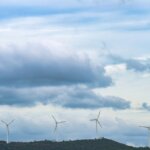Smarter procurement and Scope 3 data

In Part 1 of this article, we spoke with Jarrod McAdoo, Director of Procurement at Ivalua, a procurement software company with a handle on value chains and Scope 3 complexities, about why some companies hadn’t yet started collating and reporting their Scope 3 data on their supply chain’s carbon footprint. In Part 2, Jarrod tackled the issue of “involuntary greenwashing” as a result of a Scope 3 data shortfall.
While we had him in the chair, we asked Jarrod about the role that smarter procurement could play in solving the complex Scope 3 data puzzle.
JMcA:
Procurement has gotten really smart about the challenges companies have with cost savings, because the business always comes to procurement and says, “Hey, I need you to get me cost savings this year. But you have to also drive higher performance and you have to lower my risk.”
THQ:
No pressure…
The place where the trade-offs live.
JMcA:
Exactly. It’s a trade-off. For instance, you can go with a low-cost country, but that’s going to raise your risk and it might jeopardise performance. Over the years, procurement’s gotten really smart at demonstrating those trade-offs.
It’s very similar to the challenges companies are facing over Scope 3 data. Companies say “I need you to clean up my supply base when it comes to environmental impacts, I need to show some improvement on that. And oh, by the way, make sure you drive down risk and raise performance and lower the cost as well.”
When it comes to smarter procurement, we’re talking to prospects and customers who now have a supplier carbon manager, and they’re starting to understand that we need to collect the data to be able to show the business the actual trade-offs. I need to run a sourcing scenario and collect the information on how we rate the supplier in terms of sustainability risk, performance cost, and then be able to lay out nine different scenarios for your business.
Here’s the low-cost strategy. Here’s the low-risk strategy. Here’s the most sustainable strategy in the mix in between. Once you have those, you can really give some solid data to the company, so they can say “All right, I really can’t afford the greenest strategy, but we really can’t afford to go with the dirtiest strategy.”
That way, they realize that maybe those trade-offs in the middle, they can deliver some improvements to sustainability, mitigate some of the increases in cost, and keep everybody at least a little happy.
So I think from that standpoint of informing the procurement process for the company, collecting this data, putting out smart RFPs (requests for proposal), and building those scenarios for analysis are going to be critical.
The catbird seat.
Also, where procurement helps deliver this is that, when it comes to a lot of these items like sustainability, there can really be opportunities for the supply base to be in the catbird seat. If you’re really an innovative company and you got the jump on delivering sustainable products and delivering value on this, you can almost start to pick your customers, because people are going to want to come to you, because you’ve got it figured out.
So you can start to be picky about who you do business with. And that gets to be when your suppliers starts to think about how they position themselves as a customer of choice. How do they do the right things to make sure that we have the right collaboration, and the right feedback.
If you make your processes effective but simple for them to do these things, they’ll want to work with you, because they’re starting to have choices on these issues. So sometimes when you deal with suppliers, you pay them, they do what you tell them. But you know, the real procurement people who’ve been doing it for a long time understand there’s that trade-off, where at that end, they start to shape the new supplier relationship management.
With those really innovative, greener suppliers, you have to put yourself in the best position to compete for those items. So the ways companies can help drive them to make those smart sourcing decisions, make the smart supplier decisions, but then also develop the supplier relationships, are by understanding the trade-offs but striving for the best overall result.
As you start to walk your suppliers down this journey, they’re going to have good ideas. And procurement’s really good at understanding those. I may only have three people in my sustainability team, so I can only get ideas from three people. But I have 10,000 suppliers. So there’s the potential have 10,000 other people have ideas on this, so you have to make sure you keep that open door and the innovation and the feedback keeps coming.
The “Eureka!” moments.
That could be something as simple as a supplier telling us, “Hey, you realise if we change this packaging, we could use something that’s recyclable, and really drive down the carbon footprint on this without any degradation of quality?” The buyer would be like “Wow, I never thought of that.” But being open to those suggestions – that’s real trick to smarter procurement. Getting the feedback not just from the small team you can probably allocate to this, but all your suppliers too.
Procurement is really positioned with the skillset to really help drive these changes, not only because they work with the suppliers, but also because they understand the importance of the data and the trade-offs that need to be made, because there’s still going to be a trade-off, especially in this economy.
We’re still dealing with the challenges, the inflation, the supply chain issues, but we’ll have to make some decisions. We just can’t go totally green in one giant leap, because we do have other challenges. But there is that middle ground where the trade-offs live. In that area, we can start forwarding all of our objectives together. That’s the value of smarter procurement.
In the final part of this article, we’ll look at how we move from a world of trade-offs on sustainability to creating a virtuous circle.










